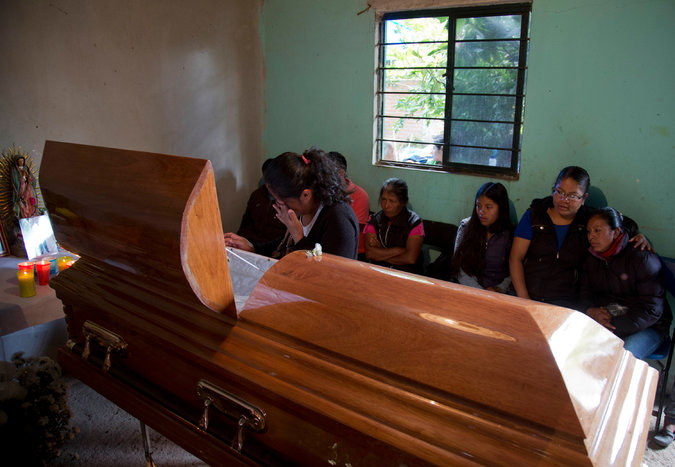In this article New York Times reporters Azam Ahmed and Kirk Semple analyze how and why the battle over education in Mexico has turned violent and deadly.
NOCHIXTLÁN, Oaxaca — Violent protests have claimed the lives of at least nine people in little more than a week, littered the roads with the charred remains of cargo trucks, and tapped a deep vein of anger and mistrust toward the government.
Thousands of students here in the southern state of Oaxaca have been without school for months as their teachers have taken to the streets, rejecting national efforts to improve the enormous, abysmal education system.
But after government forces clashed with demonstrators here in the town of Nochixtlán June 19 leaving at least nine dead and dozens wounded, the protest movement appears to have gained steam, plunging President Enrique Peña Nieto’s signature education changes deeper into controversy.
In recent days, thousands of students in Oaxaca have joined their teachers in the streets for the first time to rail against the government, and many adults once ambivalent about the teachers’ cries of injustice have also taken up the cause.
“Before, we weren’t supporting either side,” said Karen Hernández Casares, 15, a student in Oaxaca City who was among thousands of fellow students dressed in school uniforms and carrying posters denouncing the education overhaul. “But we can’t stand by and allow government repression.”
“Everything has changed now,” she added.

A woman mourning at the coffin of Yalid Jimenez, 29, who died on June 19 in the clashes in Nochixtlán, Mexico. (PHOTO: Eduardo Verdugo/Associated Press)
The violence touched a raw nerve in Oaxaca, which, despite a thriving tourism industry, is one of the poorest and most volatile states in the country. The government’s response to the protests has amplified a belief that the education reforms are just the latest effort by Mexico City to marginalize the people here and deprive them of their rights and dignity.
In most of the country, the president’s push to revamp the schools has found broad acceptance. Government officials and supporters of the overhaul point out that the resistance has been almost entirely concentrated in four southern states, especially Oaxaca, and involves only a small fraction of the nation’s education employees.
Even many of the president’s opponents agree that the nation’s public education system — the world’s fifth largest, with more than 30 million students — is in dire need of repair.
It has long been one of the worst-performing public education systems of the world’s largest economic powers. According to a January 2015 report by the Organization for Economic Cooperation and Development, Mexico’s academic achievement ranked last among the group’s 34 member states.
Mexico’s schools have suffered from wasteful spending and a bloated bureaucracy that for years was heavily influenced, if not outright controlled in places, by the powerful national teachers’ union. With about 1.6 million members, it is the largest public union in Latin America.
“The state governments were prisoners of the local sections of the union,” said Carlos Ornelas, a professor of education and communications at the Universidad Autónoma Metropolitana in Mexico City.
To read full article, click here.
Source: nytimes.com



1 comment
There are three southern states, namely, Guerrero, Oaxaca and Chiapas. These three states are at the bottom list in the country, in terms of education, development and poverty. Teachers do whatever they want, except working. These teachers have been fired because they rejected the new reforms of the educational system, now implemented in the other 27 states. Of course, they now protest violently, breaking the national peace and the already diminished security. It is obvious one thing: ignorance and deficient education goes along with poverty and underdevelopment; even in a country like Mexico this is visible and is a fact. Imagine! Teachers promoting ignorance and poverty and violence.